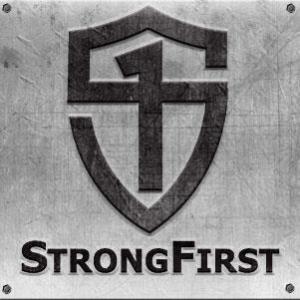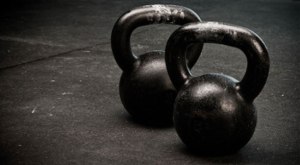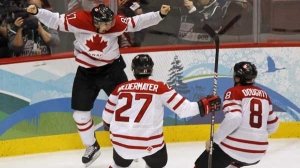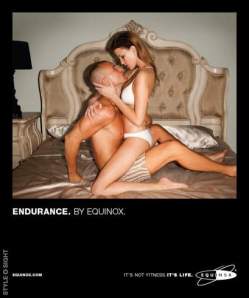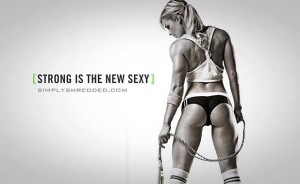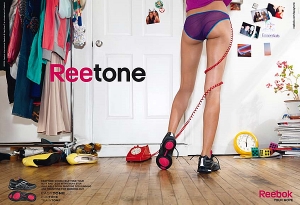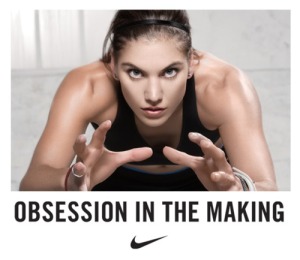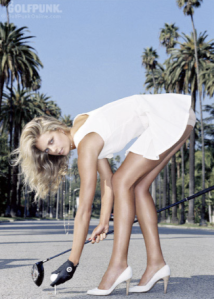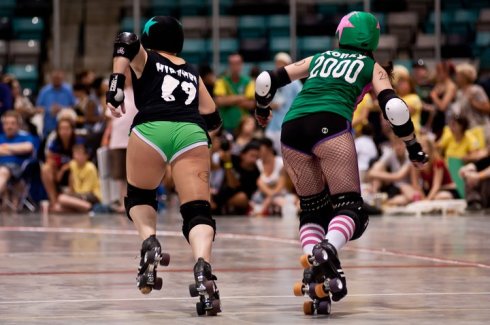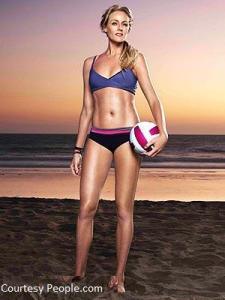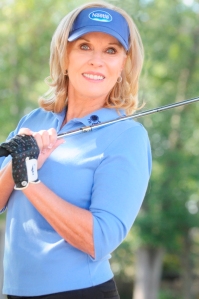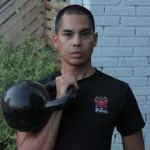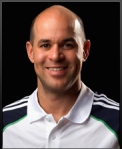TCRG just had its latest Fresh Meat intake on Monday. What a charming and enthusiastic group of girls! They came in all bright-eyed and hopeful for what was the first time on skates for some of them, and they all performed admirably.
Every time we have an intake, I hearken back to the days long, long ago when I was fresh meat, and didn’t know my ass from my elbow – but definitely fell on both of them – and I reflect on the things I wish I’d known.
Here are three things I wish I’d been told:
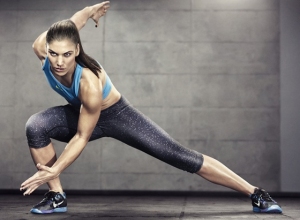
Hope Solo, From Nike+ Training
You Need to Train Like An Athlete
I’ll tell you what I told my new freshies on Monday – Derby isn’t the workout. Train outside of derby. Seriously. It will make a world of difference. This is probably the area that I get the most questions about since people know they need to cross-train, but haven’t a clue where to start. I’m a little reticent to give blanket workouts, since everyone has their own set of challenges, imbalances, and patterns. Your best bet is to find a trainer who knows a thing or two about bodies move, talk to them about your goals, and get them to write you a program. Or get a trainer to come up with an off-skates plan for your league. If that’s not the way you roll, no worries, you’ll just need to do a bit more research to find a plan that works for you. Try to get a professional to look at your form periodically though, there are few quicker ways to invite injury than repeating a faulty movement pattern over and over. Also, if something hurts (actually hurts – not is sore from exertion, learn the difference) – STOP DOING IT. Don’t keep plugging through something just because you think you have to be a bad-ass, pain is the body’s way of telling us something is up. What might be perfectly safe for others might not be a good idea for you (like I said, we all have our own challenges). Don’t ignore your body’s signals.
All of that disclaiming aside, here are a few key points to keep in mind when you get started with your cross-training and a basic plan to get you on your way:
In the derby, generally (very generally) our quads (the muscles on the front of your thigh that control extension at the knee, as well as flexion at the hip, along with your hip flexors) get crazy strong and muscular (hello, none of my pants fitting in the thigh anymore). Sometimes the left is slightly stronger (because you balance on it all the time turning left). Strong quads are great, but we need to encourage balance amongst the muscle groups, lest your quads take over everything. I wrote an entire post about training your glutes. Don’t neglect your posterior chain – it’s the most powerful mover in your body and you should give it some love.
When you start skating, oftentimes you find yourself with a host of new aches and pains (and bruises, but we’re not really talking about those), pay attention to them. If your low back is hurting, it could be that you need to work more on your glutes and hamstrings, it could be a lack of core strength, it could be something clinical. Track your pain and see if it gets better or worse as you get stronger. Bring a foam roller with you to practice, and roll out your shiz before (and after) practice – rolling out your calves often helps with shin splints, rolling out your quads often helps with posture.
When you’re training, if one side is stronger, only do as many reps of an exercise as you can do with good form on the weak side. On that note, meet yourself where you’re at. Don’t do exercises just because you think they’re cool, do them because they’ll give you the appropriate training effect. Don’t jump into something advanced before you are ready, there are tons of ways to regress an exercise (inclines, band assistance, lighter or no weights, smaller range of motion, etc.) – make sure you can perform the exercise with perfect form before you progress into a more challenging variation.
You can use a few simple multi-joint exercises – both upper and lower body, save time, and get a great training session. Here’s an easy template you can quickly adapt to a derby off-skates training regime. In any given session, you can include:
Upper Body Push – horizontal: eg.) push-ups, chest presses; vertical: eg.) military presses, push presses
Upper Body Pull – horizontal: eg.) rows – inverted, seated, alternating; vertical: pull-ups, chin-ups, lat pull-downs
Lower Body Squat Pattern – eg.) front squats, back squats, wall squats, goblet squats
Lower Body Deadlift Pattern – eg.) deadlifts, glute bridges, hip thrusts, romanian deadlifts (also kettlebell swings to a certain extent)
Lower Body Unilateral – eg.) split squats, step-ups, lunges, 1-leg RDLs, bulgarian split squats
Core – (I’m a big fan of stabilization here) – prone planks, side planks, woodchops, birddogs, get-ups
Agility and/or Endurance – I’m a big fan of interval training, going hard for brief spurts, recovering, going again. I find it carries over nicely into the energy systems you use in derby, takes less time overall, and is less boring than steady state cardio. Start with a working pace you can maintain and a challenge pace that is actually challenging. Be creative with your cardio. It doesn’t have to be treadmills and bikes – it can be sled pushes, swings, heavy carries, ropes, hill sprints, jumping, dancing – the only limit is your imagination (and your threshold for fatigue).
Pick 4-6 exercises, 3+ sets (depending on what you’re doing and what you want to accomplish), set appropriate rest periods – don’t skip them, have a dynamic warm-up, plan a cooldown, and go to town on your off-skates training!
Again, I restate – make sure you’re moving well, that nothing gives you pain, and that you have a plan. My most favourite advice, from the incomparable Grey Cook, ‘First move well, then move often.’

You Need to Eat Like An Athlete
(Hopefully) Gone are the days where your pre-bout meal was a slice of pizza and a large Coke. Poor nutrition all week will manifest in your derby performance, so it’s important to eat well. General sound guidelines (and I mean general – I am not a doctor or nutritionist, just someone who tries to eat well and help skaters to do the same):
Eat whole foods as often as you can, local or organic when you can swing it.
Eat lean proteins, veggies, and healthy fats (oils, nuts, seeds) with each meal.
Save your starchy carbs for post-exercise meals.
There are a raft of additional tools that you can use to help you dial in your nutrition, and to make sure that you are getting the energy you need to support your sport. I use (and love) Precision Nutrition – full disclosure: I’m a certified PN coach, so I’m a tad biased. If you struggle with this sort of thing, or are curious about nutrition – talk to someone! There’s so much nutritional information out there, some of which is helpful and some of which is bunk – instead of trying to sort through all of it, find a professional out there who can give you some tools.
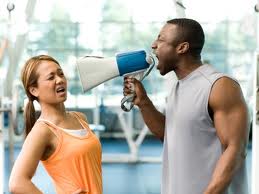
The Trainers Critique You Because They Love You
I mention this because I am one of those trainers. I’ve had newly graduated meat tell me they thought I was picking on them. I’ve had girls break down because they think they’re never going to master a skill. I’ve had girls harbour negative feelings about trainers LONG after they joined the league. It’s a tough position – you are learning something new and challenging. The trainers are there to help you, not belittle you. We do, however, have to tell you when you are doing something that might be dangerous, and give you tips on how to refine your skills. If we’re giving you lots of feedback, it’s because we believe in you. If we’re only giving you negative feedback, it’s because there are more girls than trainers, and that’s all we have time to give. Know that when the trainers get together afterwards, we all talk about the great things you did and how far you are coming too. If you have an issue with the way a trainer critiques – talk to them. Let them know how to teach you best. We’re all in this to get better and bad-asser, so let’s help each other do it in the least emotionally-fraught way possible.
Finally, a couple of extra tips that make a difference in your Meat Experience:
Derby Takes Time to Change
Whenever you join a new organization, it’s easy to see the flaws. You have a fresh set of eyes, and you can see where people are dropping the ball, where there’s room for improvement, and where you can help out. I highly recommend only publicizing that last one. When new skaters come in with energy and the desire to pitch in wherever they can, managers love it. When new skaters come in with a laundry list of changes that should be made, we don’t love it quite so much. Have your great ideas, document them, and start work on a committee that interests you. Once you know a little bit about how the committee operates, and how the head of the committee likes to manage, pitch your idea – and say that you’ll do the work to implement it. This saves a lot of undue stress. We all want our leagues to be the best possible machine they can be – just sometimes the gears grind slowly, and you have to apply the grease gently.
Don’t Forget About the Things That Were Important Before Derby
Before you join derby, presumably you have friends, maybe a life partner, pets, a family, hobbies, a job. Don’t forget that these things exist just because you have a shiny new thing that you do. Derby will take up A LOT of your time if you let it, so have a plan to keep some balance. Make dates with your friends, family, and life partner and keep them. Try to keep things in your conversational reservoir that are not derby-related. People will want to hear about what you’re doing in derby – it’s a pretty cool thing to do – but don’t forget to ask about them and what they’re doing, they might be doing cool stuff as well.
Finally, The most important part of joining a roller derby league is finding your own way.
I can give you lots of helpful tips and tricks, but you need to learn who you are and where you fit into derby. There are lots of people ready and willing to help you along the way, just ask them. Vets aren’t as scary and insular as you think. They’re like bears – just as scared of you as you are of them. Most of us join derby because we’re social misfits to begin with – take the first step and introduce yourself to people you think you’d like to get to know. Come into derby with open ears, a willing spirit, and a determined heart and it’ll be no time before you find where you belong.
Tags: fresh meat, program design, sports nutrition


